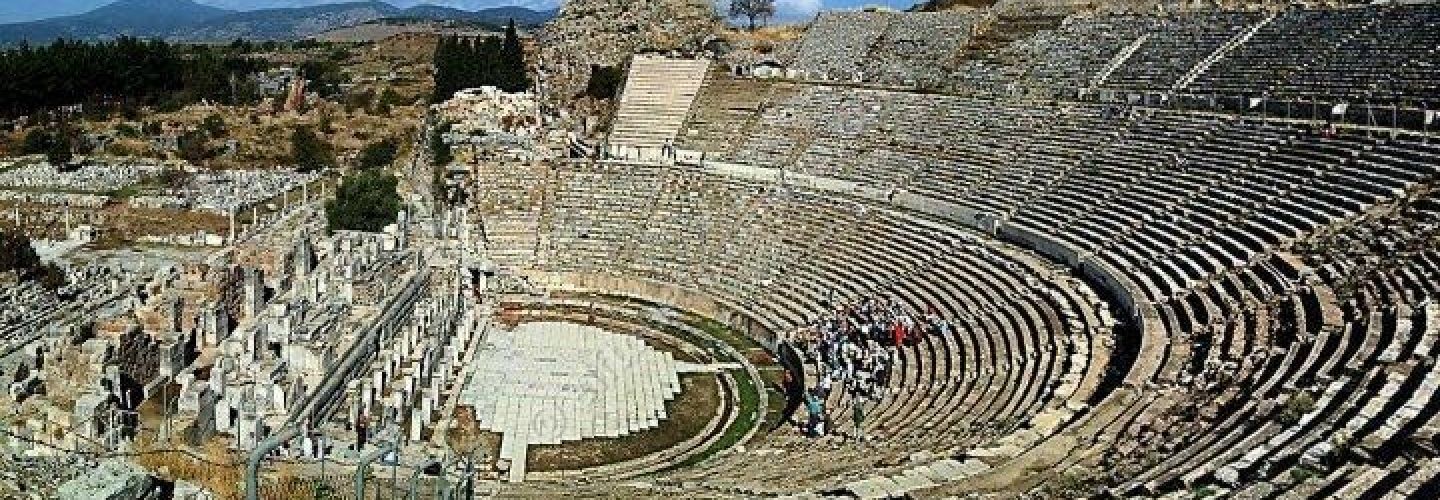
Ephesus
In Roman times it was situated on the northern slopes of the hills Coressus and Pion and south of the Cayster (Küçük Menderes) River, the silt from which has since formed a fertile plain but has caused the coastline to move ever farther west. The Temple of Artemis, or Diana, to which Ephesus owed much of its fame and which seems to mark the site of the classical Greek city, was probably on the seaboard when it was founded (about 600 BCE), one mile east by northeast of Pion (modern Panayir Daǧ).
In Roman times a sea channel was maintained with difficulty to a harbor well west of Pion. By late Byzantine times, this channel had become useless, and the coast by the mid-20th century was three miles farther west. Ephesus commanded the west end of one great trade route into Asia, that along the Cayster valley, and had easy access to the other two, along the Hermus (Gediz) and the Maeander (Büyükmenderes) rivers. Ephesus shared in a general revolt of 412 BCE against Athens, siding with Sparta in the Second Peloponnesian War, and remained an effective ally of Sparta down to the end of the war.
Threatened by Persia after 403, Ephesus served in 396 as the headquarters of King Agesilaus of Sparta. In 394 the Ephesians deserted to Conon’s anti-Spartan maritime league, but by 387 the city was again in Spartan hands and was handed by Antalcidas to Persia. There followed the pro-Persian tyranny of Syrphax and his family, who were stoned to death in 333 on Alexander the Great’s taking the city. After 50 years of fluctuating fortune, Ephesus was conquered by the Macedonian general Lysimachus and resettled around Coressus and Pion (286–281 BCE).
Lysimachus introduced colonists from Lebedus and Colophon and renamed the city after his wife, Arsinoe—a name soon dropped. This was the beginning of Ephesus’s Hellenistic prosperity. It became conspicuous for the abundance of its coinage.
